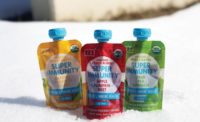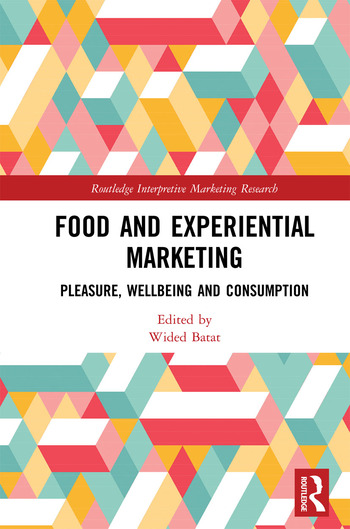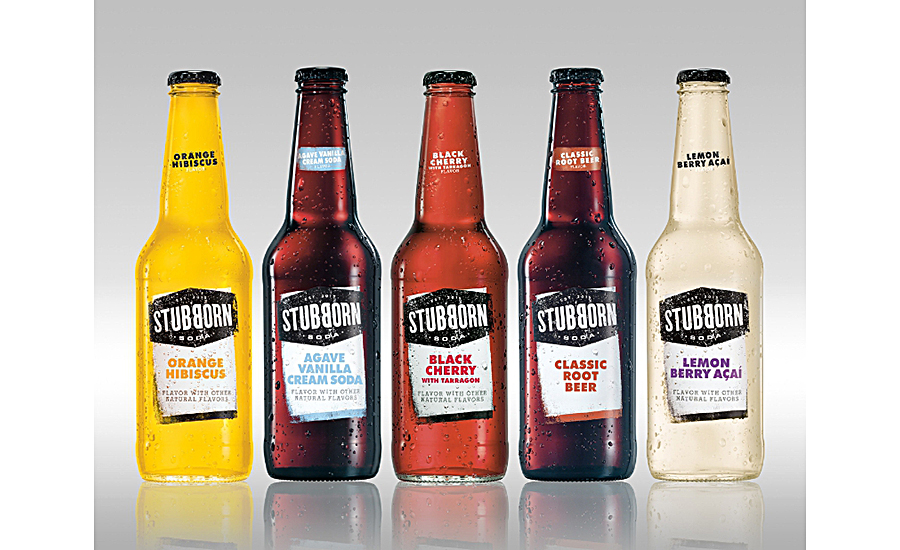Trends in Clean Labels and Transparent Packaging
Clean label moves beyond trend status. Consumers now ask for transparent “clear” labels.






It is now nearly six years since Innova Market Insights identified interest in clean-label options as one of its Top Trends for 2011. Of course, related new product development and marketing on this platform has continued to develop.
It could be said that clean labelling has moved beyond trend status. It almost has become the target standard for new and reformulated foods and drinks. Consumers are demanding shorter and more recognizable ingredient lists. Manufacturers are responding by increasingly highlighting the naturalness and origins of product ingredients.
About 26% of total global new product launches recorded by Innova Market Insights in the 12 months to the end of May 2016 used one or more claims relating to naturalness, freedom from additives and preservatives or organic certification. This is up from 23% in the previous 12-month period. In the US, an even larger 35% of new products carried one or more of those claims during the same 2016 tracking period.
 Working Class Heros
Working Class Heros
This trend has had a radical and ongoing effect on ingredient use. Food and beverage formulators are eyeing clean labels and turning to all-natural or predominantly natural formulations, wherever possible. As a result, natural ingredients are increasingly in demand. This encourages the arrival of new options in some instances. In other cases, researchers are revisiting and updating older, more established ingredients.
Sweet Solutions
Natural sweeteners’ popularity has surged and perhaps is best exemplified by growing use of stevia. Stevia offers natural appeal and lets formulators quite literally reduce sugar and calories. And with growing regulatory approval in the recent years, market observers have expected stevia to revolutionize sweetener use. However, penetration has not proceeded as fast as expected in some instances. Innova Market Insights found that only just over 1% of worldwide new food and drinks launches featured stevia in the 12 months to the end of May 2016. That figure rises to a still modest, but much higher 3% in the US.
Although stevia-sweetened lines are being introduced across a range of food and drinks sectors, launches appear to be focusing strongly around soft drinks and sports nutrition products. Those categories accounted for a combined 53% of US launches using stevia during the 12-month, May-to-May tracking period.
In the soft drinks market, stevia is used by some leading players and brands, such as Coca-Cola and PepsiCo. New Coca-Cola Life and Pepsi True products target the lower- or mid-calorie market, rather than classic full-sugar or calorie-free diet options. Innova Market Insights finds that Coca-Cola Life is available in a number of countries. However, it has experienced a number of changes, largely in response to lack of consumer understanding about the “mid-calorie” concept. So far in the US cola category, for example, sales of classic full-calorie colas have remained relatively static in recent years. Meanwhile, low-calorie product sales have fallen.
Looking more broadly at the beverage category, Innova Market Insights found that stevia was featured in just under 17% of new flavored water products introduced during the 12 months ending in May 2016. During that same time, stevia appeared in 16% of new US juices and juice drinks; 13.5% of new US soft drinks, concentrates and mixes; just under 13% of new energy drinks and just over 11% of new iced tea beverages.
Products presenting an intrinsically healthy and natural image have continued to feature stevia—sometimes in blends with other natural and organic options. Active brands here have included Zevia zero-calorie sodas, Jones Stripped natural premium sodas with an organic agave/stevia sweetener blend, Honest Ginger Beer and H2O Water Enhancers with stevia sweeteners, and In the Raw reduced-calorie beverages with stevia.
Cumberland Packing Corp., Brooklyn, N.Y., originally focused on natural table-top sweeteners, starting with non-GMO Sugar In the Raw in 1970. The company followed this with innovations, including fairtrade certification and launches such as zero-calorie Stevia In The Raw, Monk Fruit In The Raw and Agave in the Raw. In 2015, it moved into the reduced-calorie beverages market with a half-sugar formulation made with sugar and stevia and three varieties: In The Raw Tea with Natural Lemon Flavor, In The Raw Lemonade and In The Raw Cola.
Other natural sweeteners are increasingly used, often in combination with sugar, stevia and/or other sweeteners. Honey and agave are proving particularly popular, and there also is growing interest in monk fruit.
Yoplait’s Yogurt & Juice blends, launched in the US in 2015, use monk fruit and stevia as natural sweeteners, for example. Elsewhere, Chobani’s Simply 100 Greek yogurt range is sweetened with a blend of stevia, monk fruit and evaporated cane juice. Early 2016 saw a new media campaign for the brand, focusing on its all-natural credentials, while a new Simply 100 Crunch mix-in line—with three flavors—joined its portfolio.
Back to Basics
Interest in naturally nutritious ingredients and a return to basics has also led to increasing consumption of ancient grains and green foods, including green vegetables such as kale, as well as grasses and seaweed.
Another development perceived to be simpler and more natural involves the rise of the Paleo Diet as a weight-loss program. The Paleo Diet has been around for some years, but has now grown to achieve almost cult status, particularly in the US, since its revival in the early 2000s.
Interpretations and definitions of the diet vary considerably, but the basic idea is to follow a Stone Age diet of 10,000 years ago, prior to agriculture and farming. A Paleo Diet consists of lean meat, seafood, nuts and fruit and vegetables. It avoids grains, legumes, dairy products and foods high in refined sugar and salt.
For the record, when Innova Market Insights tracked the word “paleo” in new product introductions, researchers found a tremendous surge during the past five years, from single figures in 2010 to more than 380 new products with claims in 2015. Although this remains very small in terms of global launch activity totals, it is nearly two and a half times the number recorded in 2014. Growth appears to be continuing, with more than 100 product launches already recorded in the first three months of 2016.
Paleo product activity also is spreading out globally from the US (where the current rise in interest started). The share of the US in paleo launch activity fell from over three-quarters of the tracked launch total in 2014 to just more than 55% in 2015. This indicated the emergence and growth of activity in other parts of the world, perhaps most notably Australia, where activity went from virtually zero in 2014 to account for more than 20% of the 2015 total, putting it ahead of Europe with just over 12%.
Launch activity has been fairly fragmented in terms of product categories, although cereals, bakery products and snacks account for a combined 56% share. Sports nutrition products take fourth place, ahead of soft drinks and dairy alternatives. Where products are increasingly being marketed as paleo-friendly, some high-profile lines now also feature “paleo” in the product name or brand. New US examples include products such as Paleo Cookies and Paleo Protein Bars from Julian Bakery, Paleopure Trail Mix from Paleopure, Steve’s Paleocrunch Granola, and Paleogoods Paleobars.
Next Up: Non-GMO
With this ongoing interest in “back to basics,” clean label and greater transparency, the free-from category also continues to grow globally. In addition to high-profile developments in areas such as lactose- and dairy-free and gluten-free foods and drinks, there also is a marked upturn of interest in GMO-free or non-GMO products. This is particularly true in the US.
In terms of product activity, launches featuring GMO-free claims and labelling have risen markedly in recent years to move closer to natural claims in terms of numbers. Nearly 15% of global launches recorded by Innova Market Insights in the 12 months to the end of May 2016 were marketed on an additive-free or preservative-free platform, 9.6% were marketed as organic, 6.4% as natural and 5.2% as GMO-free.
The global share of GMO-free rose to that level from 3.3% in the previous 12-month period, while in the US alone the share of launches using GMO-free claims rose from 10.6% to nearly 14%, taking it ahead of organic and natural in terms of usage.
Not surprisingly, there’s been tremendous growth in the Non-GMO Project. Verification program in the US. It began in 2008 as the first program to test whether a product met defined standards for the presence of GMO’s. This program provides third party verification that best practices were in use, including strict traceability, segregation and testing.
It’s reported that more than 35,000 products have now been verified and that sales of products using the Non-GMO Project Verified label have reached over US$16 billion, up significantly from about 5,000 products with sales of US$1.2 billion in 2011. Recent recipients of the verification seal include Second Nature for 12 of its snack medleys, Erin Baker’s Homestyle Granola, Rodgers Puddings’ four chilled grass-fed milk puddings and Betsy’s Best Gourmet Almond, Peanut and Sunflower Seed butters.
Snacks and cereals lead in terms of US launches using non-GMO claims. This probably reflects the significance of GM ingredients in products using high levels of cereals for food. While snacks had the highest number of GMO-free claims overall in US launches, cereals led in terms of share. Innova Market Insights found that nearly 40% of introductions of breakfast cereals and cereal bars featuring this type of labelling, compared with just more than 28% for snacks, up from 34% and 25%, respectively, in the previous 12-month period.
There also has been relatively strong interest in non-GMO labelling in the dairy industry, where a natural image traditionally has been important. In fact, growing interest has led to ongoing activity in organic and pasture milks. There is a strong link between organic dairy lines and GMO-free certification.
In fact, many products use both types of positioning, including some leading organic dairy producers such as Stonyfield Farm and Organic Valley; as well as non-dairy drink lines such as Blue Diamond Almond Breeze and White Wave Silk. Chobani, the leading US Greek yogurt brand, also is certified as non-GMO. For the record, Chobani has done this in conjunction with the Eurofins food testing organization and yogurt labelling reflects this.
Moving forward, it remains to be seen what effect the US legislation will have on the use of this type of claim. Perhaps there will not be much change—at least initially. GMO-free claims are still used in other countries and regions to some extent, perhaps most notably the EU, even where GMO usage already has to be declared by law.
With ongoing concerns over the lack of a definition of “natural,” however, there still is need for more clarity and specificity. That’s because consumers, retailers, industry and regulators all are still driving demand for more food labelling transparency. Innova Market Insights recognizes that clean label no longer is a niche area. In fact, that’s why the firm identified “From Clean to Clear Label” as No. 1 trend for 2015. Moreover, Innova identified “Organic Growth for Clear Label” as the leading trend for 2016, as more organic products are launched.
The move to “Clear Label” focuses on even greater transparency and is itself part of the overarching theme of clean label.
Interestingly, organic and GMO-free options are experiencing the strongest growth in terms of new product development—despite ongoing debate about health benefits and sustainability of the former, and environmental and economic implications associated with the latter.
Lu Ann Williams is director of innovation at Innova Market Insights, provider of market research services including the Innova Database. With 20 years’ experience in the food industry, Lu Ann is a trend expert and frequent public speaker at events worldwide. She leads a team of analysts and works with global clients. Contact her at luann.williams@innovami.com.
Looking for a reprint of this article?
From high-res PDFs to custom plaques, order your copy today!












